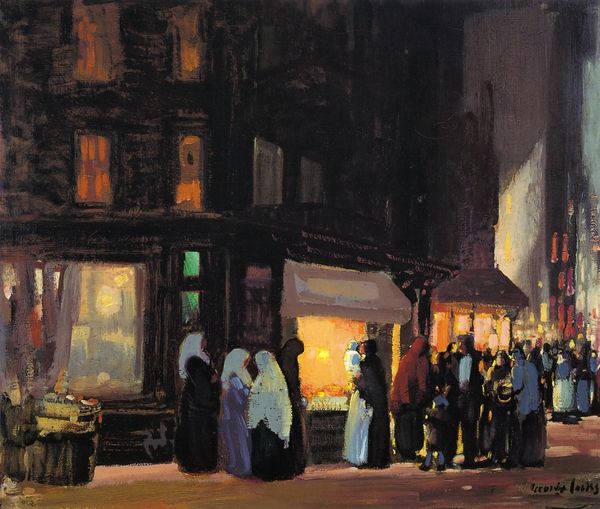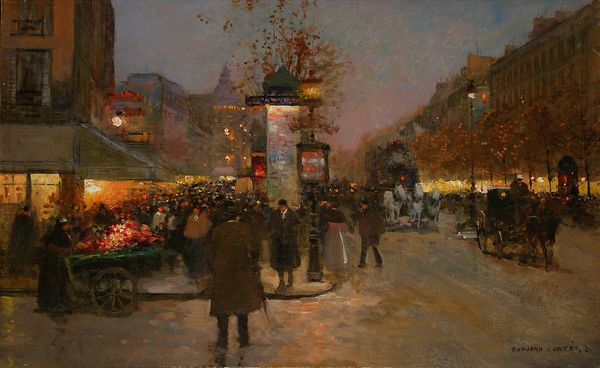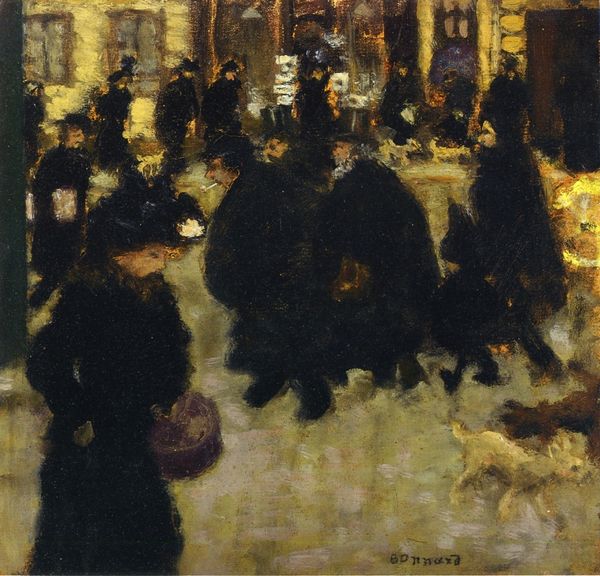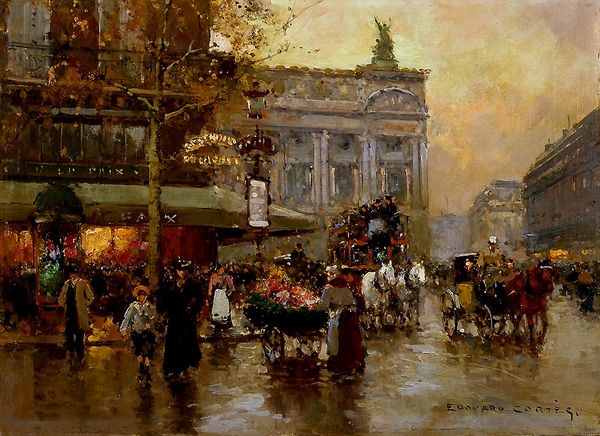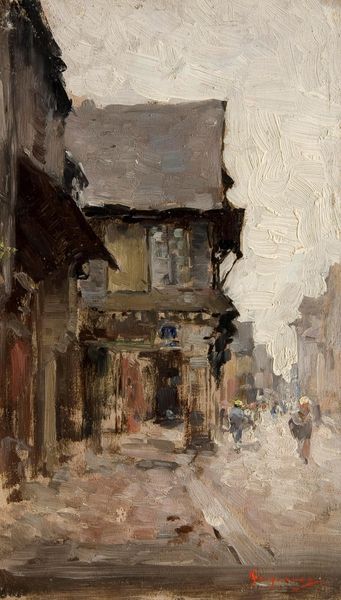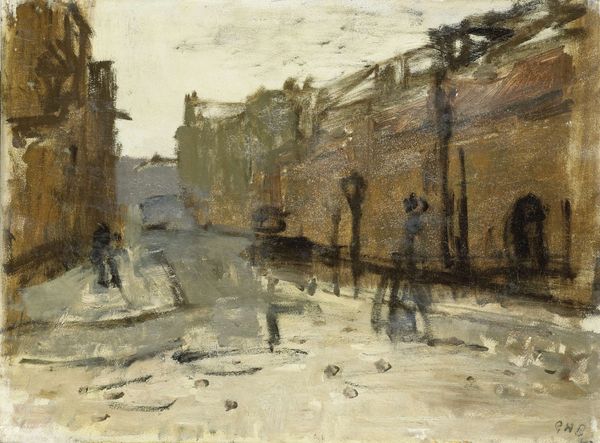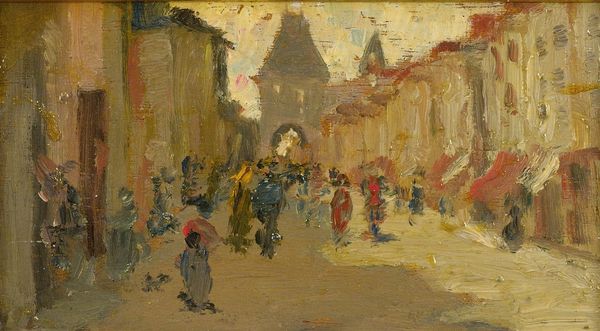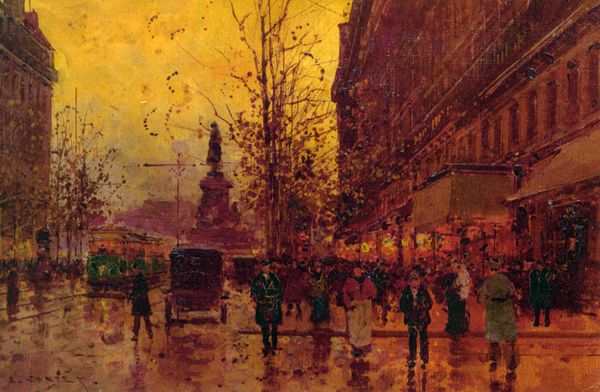
Copyright: Public domain
Curator: Here we have Robert Henri's "Montparnasse," painted in 1898. It’s an oil on canvas, a nocturne that captures a bustling Parisian street scene. What's your initial impression? Editor: Gloomy. Atmospheric, certainly, but the pervasive darkness and muted tones convey a sense of melancholy, almost alienation, despite the apparent activity. It makes me think about labor after sunset. Curator: I agree. The painting is interesting when we consider Henri's exploration of impressionism within the broader context of late 19th-century social realism. The rapid brushstrokes and emphasis on capturing the fleeting moment align with impressionist techniques. Think about the industrialization and the changing nature of urban life. Editor: Right, and this ties into discussions of class and the experience of urban modernity. Who is out working at this time, and who has the leisure to stroll or sit at cafes? The painting asks us to question whose stories are told, and whose are not. Curator: Also, it's plein-air, a practice that places importance on being in the real location, immersing oneself to faithfully capture the subject, giving us that almost documentary-like essence of that evening in Montparnasse. Henri used fairly simple materials: mass-produced canvases, commercially available oil paints. Editor: It definitely makes me think about the experience of marginalized figures navigating public space. Curator: This area became known as the hub of the Parisian artists and writers who challenged the traditional system of art making at the time. Considering how accessible the production became, we can look into art and economy, and discuss art for whom? Art for what? And how accessible that could become? Editor: Indeed. So when considering Robert Henri’s painting and those figures captured, one begins to understand the nuances and complexities of art and their engagement with urban space, power, class, and societal narratives that art inherently engages with. Curator: Fascinating—I see his decision of what paints he used contributes greatly to that understanding of accessibility to art making at that time, allowing these scenes to be captured from the everyday point of view. Editor: It certainly offers a critical view on whose voices are amplified and suppressed within the metropolis, prompting viewers to reflect on these ongoing power dynamics and questions.
Comments
No comments
Be the first to comment and join the conversation on the ultimate creative platform.


